
Canadian literature is the literature of a multicultural country, written in languages including Canadian English, Canadian French, and Indigenous languages. Influences on Canadian writers are broad both geographically and historically, representing Canada's diversity in culture and region.
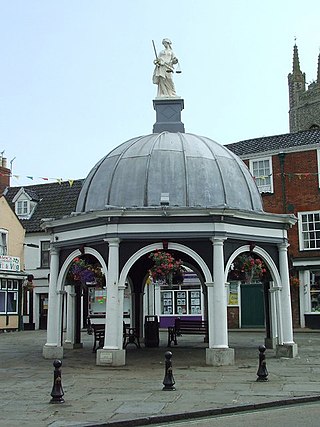
Bungay is a market town, civil parish and electoral ward in the English county of Suffolk. It lies in the Waveney Valley, 5.5 miles (9 km) west of Beccles on the edge of The Broads, and at the neck of a meander of the River Waveney.
This article contains information about the literary events and publications of 1852.
This article contains information about the literary events and publications of 1836.
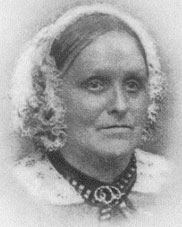
Susanna Moodie was an English-born Canadian author who wrote about her experiences as a settler in Canada, which was a British colony at the time.
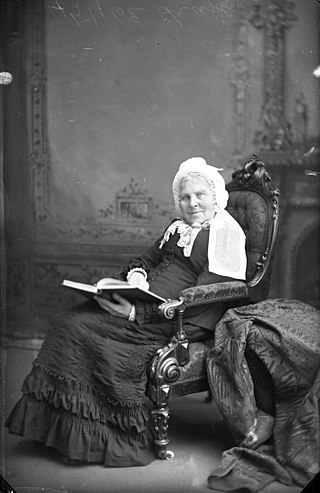
Catharine Parr Traill was an English-Canadian author and naturalist who wrote about life in Canada, particularly what is now Ontario. In the 1830s, Canada covered an area considerably smaller than today. At the time, most of Upper Canada had not been explored by European settlers.
The Canadian Experience is a television documentary series shown on CBC Television; each of its one-hour episodes present an event or story from Canadian history. The first episode aired on January 22, 2004. The series is produced by the CBC Documentary Unit, the team behind Canada: A People's History.

Selwyn is a township in central-eastern Ontario, Canada, located in Peterborough County.
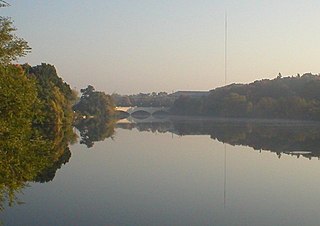
The Otonabee River is a river in Peterborough County in Central Ontario, Canada. The river flows from Katchewanooka Lake, at the north end of the community of Lakefield, through the city of Peterborough to Rice Lake. It is in the Great Lakes Basin and forms part of the Trent-Severn Waterway.
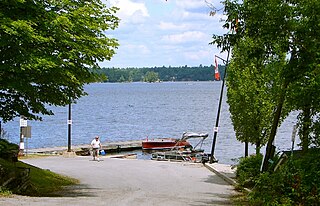
Douro-Dummer is a township in central-eastern Ontario, Canada, in Peterborough County along the Trent-Severn Waterway. It was formed on January 1, 1998, through the amalgamation of Douro and Dummer Townships.

Agnes Strickland was an English historical writer and poet. She is particularly remembered for her Lives of the Queens of England.
Strickland is an English toponymic surname derived from the manor of Strickland in the historical county of Westmorland, now Cumbria, England, represented geographically by the modern villages of Great Strickland and Little Strickland. The surname dates as far back as the 12th century in Westmorland, and is also found at an early date in the Scottish counties of Ayrshire and Lanarkshire.

Many have seen the status of women in the Victorian era as an illustration of the striking discrepancy between the United Kingdom's national power and wealth and what many, then and now, consider its appalling social conditions. During this era, whose sobriquet refers to the reign of a female monarch, Queen Victoria, women did not have the right to vote, sue, or if married, own property. At the same time, women labored within the paid workforce in increasing numbers following the Industrial Revolution. Feminist ideas spread among the educated middle classes, discriminatory laws were repealed, and the women's suffrage movement gained momentum in the last years of the Victorian era.
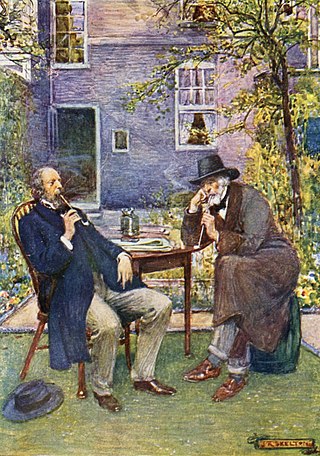
Victorian literature is English literature during the reign of Queen Victoria (1837–1901). The 19th century is considered by some to be the Golden Age of English Literature, especially for British novels. It was in the Victorian era that the novel became the leading literary genre in English. English writing from this era reflects the major transformations in most aspects of English life, from scientific, economic, and technological advances to changes in class structures and the role of religion in society. The number of new novels published each year increased from 100 at the start of the period to 1000 by the end of it. Famous novelists from this period include Charles Dickens, William Makepeace Thackeray, the three Brontë sisters, Elizabeth Gaskell, George Eliot, Thomas Hardy, and Rudyard Kipling.

Reverend George Wilson Bridges (1788–1863) was a writer, photographer and Anglican cleric. After eloping with his wife, he was Rector for the Jamaican parish of St Dorothy until late 1817, and then Manchester from 1817 to 1823. He moved to become rector at the neighbouring parish of St Ann from 1823 to 1837. He published works against William Wilberforce and another book resulted in his London publisher being found guilty of libel against Louis Celeste Lecesne and John Escoffery. After his wife left him, he lost four of their daughters in a boating accident. Bridges went to Canada and returned to England to meet William Fox Talbot and take up photography. He toured around the Mediterranean taking 1,700 early pictures including Egypt, Greece, the Holy Land and Mount Etna erupting. His last parish was in Gloucestershire.
Roughing It in the Bush is an account of life as a Canadian settler by Susanna Moodie. Moodie immigrated to Upper Canada, near modern-day Peterborough, Ontario during the 1830s. At the suggestion of her editor, she wrote a "guide" to settler life for British subjects considering coming to Canada. Roughing It in the Bush was first published in London in 1852. It was Moodie's most successful literary work. The work is part memoir, part novelization of her experiences, and is structured as a chronological series of sketches.
Louisa Annie Murray was an English-born Canadian author.
Clara Thomas was a Canadian academic. A longtime professor of English at York University, she was one of the first academics to devote her work specifically to the study of Canadian literature, and was especially known for her studies of Canadian women writers such as Anna Brownell Jameson, Susanna Moodie, Catharine Parr Traill, Isabella Valancy Crawford and Margaret Laurence.

Agnes Dunbar Fitzgibbon Chamberlin was a Canadian artist living in Ontario.
Susanna Moodie: Roughing it in the Bush is a Graphic novel written by Carol Shields and Patrick Crowe, adapted by Willow Dawson, and is illustrated by Selena Goulding. The graphic novel was initially written as a Screenplay by Carol Shields and Patrick Crowe but was adapted by Crowe and Willow Dawson after Shields's death. Crowe contributes this enthusiasm to adapt the work to the increased popularity of graphic novels. The graphic novel is a loose adaptation of the novel by Susanna Moodie, Roughing it in the Bush, and describes the life of Susanna and how she came to write the novel, as well as her life after Roughing it in the Bush was published.












